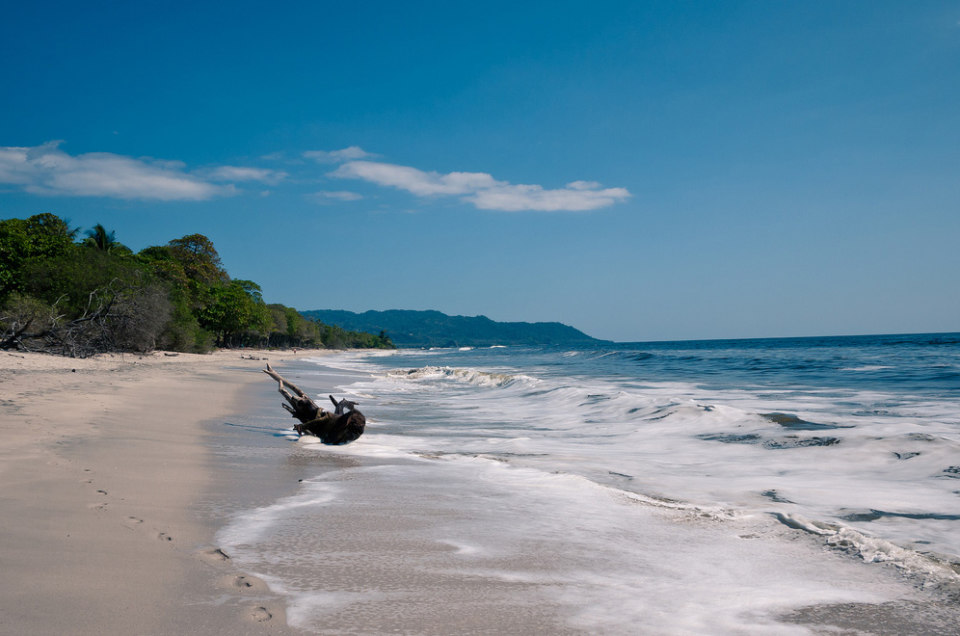Costa Rica is a land of many charms. Covered in lush green rainforest and spectacular cloud forest, and sporting three volcanic mountain ranges (featuring five active volcanoes), two coasts (Caribbean and Pacific) with beaches of white, black and even red sand, untamed rivers and dizzyingly deep canyons, the country’s beauty is as dramatic as it is impossible to forget. And it offers as much adventure as you can handle, from world-class white-water rafting to surfing to zooming over the rainforest canopy clipped to a zip line. Even though the Central American republic is sandwiched between Nicaragua and Panama, Costa Ricans have shared few of the problems that have plagued their neighbours. In Costa Rica, you need not fear the revolución — the country dissolved its military way back in 1949, and since then, has developed into an egalitarian, eco-friendly republic where citizens enjoy a relatively high standard of living. Travel at your own pace, and budget. You’ll find everything from five-star pampered luxury to places that, as the locals say, feature the “three Bs”: bueno (good), bonito (beautiful) and barato (cheap).
For those who travel to Costa Rica to experience the whole country (and not just the coast), San Jose, the capital, is the most common point of entry. Few tarry long there, but stops at the National Theatre and the Costa Rica Pre-Columbian Gold Museum, both in the central part of the city, are worthwhile. At the latter, you can get a good primer on the country’s history, both recent and pre-Columbian, especially through its excellent exhibit on Costa Rica’s indigenous cultures.
From there, Turrialba is about a two-hour drive, an interesting journey that winds past sugarcane fields and coffee plantations clinging to steep mountain slopes. Nestled into a snug valley in the country’s central volcanic range (or cordillera central), Turrialba is a magnet for those seeking adventure.
Many come for the canyoneering or hiking, but most are drawn by the Pacuare River, the top rafting river in Costa Rica, widely recognized as one of the best in the world.
Shooting the rapids of the Pacuare is a thrilling experience—even on short trips, the river narrows a number of times, providing rafters with the thrill of navigating Class 4 rapids, which have been given names such as Doble Piso (Double Drop) and Cimarrones (Wild Horses). Those seeking something a wee bit less thrilling can opt for Class 2 and 3 trips, which take place on the Pacuare or neighbouring waterways. (Families should take note that the minimum age for rafters is usually 12.) Either option will afford beautiful views of cascading waterfalls and, usually, a delicious lunch on the shore.
About three hours from San Jose — but in the opposite direction of Turrialba — sits the Arenal Volcano, one of the most active in the world. The towering green cone is almost cartoonishly perfect (ask a child to draw a volcano and it will look exactly like Arenal) and, especially on clear nights, the red lava flowing out of the top is visible to the naked eye. All of that geothermal heat has produced lovely hot springs, many of which are located in the nearby town of La Fortuna. The area is also home to a number of canopy tours, which invite you to climb to the top of the rainforest canopy and skim along the treetops on a zip line. The size and features of specific tours vary from place to place, but, for example, the one offered by the Montaña de Fuego Hotel features nine zip lines (up to 1,312 feet in length), followed by a 137-foot rappel down to the banks of a rushing river. La Fortuna is also home to an aerial tour known as the SkyTram, which affords a similar view at a much slower pace. While you’re enjoying the verdant flora, make sure to look for exotic fauna, such as howler monkeys and toucans.
When you’ve had your fill of the rainforest and the mountains, head to the coast. Most visitors head to the Pacific shores of Costa Rica’s Guanacaste and Puntarenas provinces — it’s there that you will find some of the country’s best beaches. There are plenty of opportunities to get away from it all in sleepy little beach towns such as Santa Teresa and Samara. In Samara, you can sign up for a surfing lesson at one of the surf schools that line the beach or take a horseback ride that skirts the pounding waves, then climb high up hillside trails to beautiful ocean vistas. There are a number of hotel options in and around town, including the Villas Playa Samara, where the chosen form of entertainment is usually reading a book in a hammock.
And if you love all-inclusive resorts, Costa Rica will not disappoint. Riu, a top all-inclusive resort chain, has built a brand-new property near Santa Cruz, and Paradisus offers a beautiful 2,400-acre all-inclusive on Playa Conchal. At the latter, you can be as active as you like. You can book off-site excursions, such as deep-sea fishing and scuba-diving trips, or stay active closer to home—all nonmotorized equipment (from kayaks to water bikes to laser skeet shooting to snorkeling gear) is included. Or just tip back a cerveza by the big lagoon pool—after all that activity, you’ve certainly earned it.
